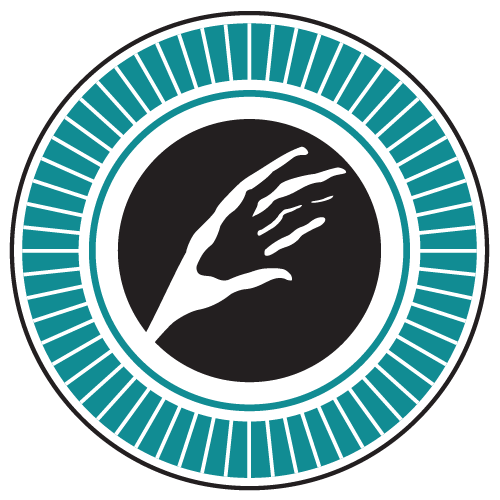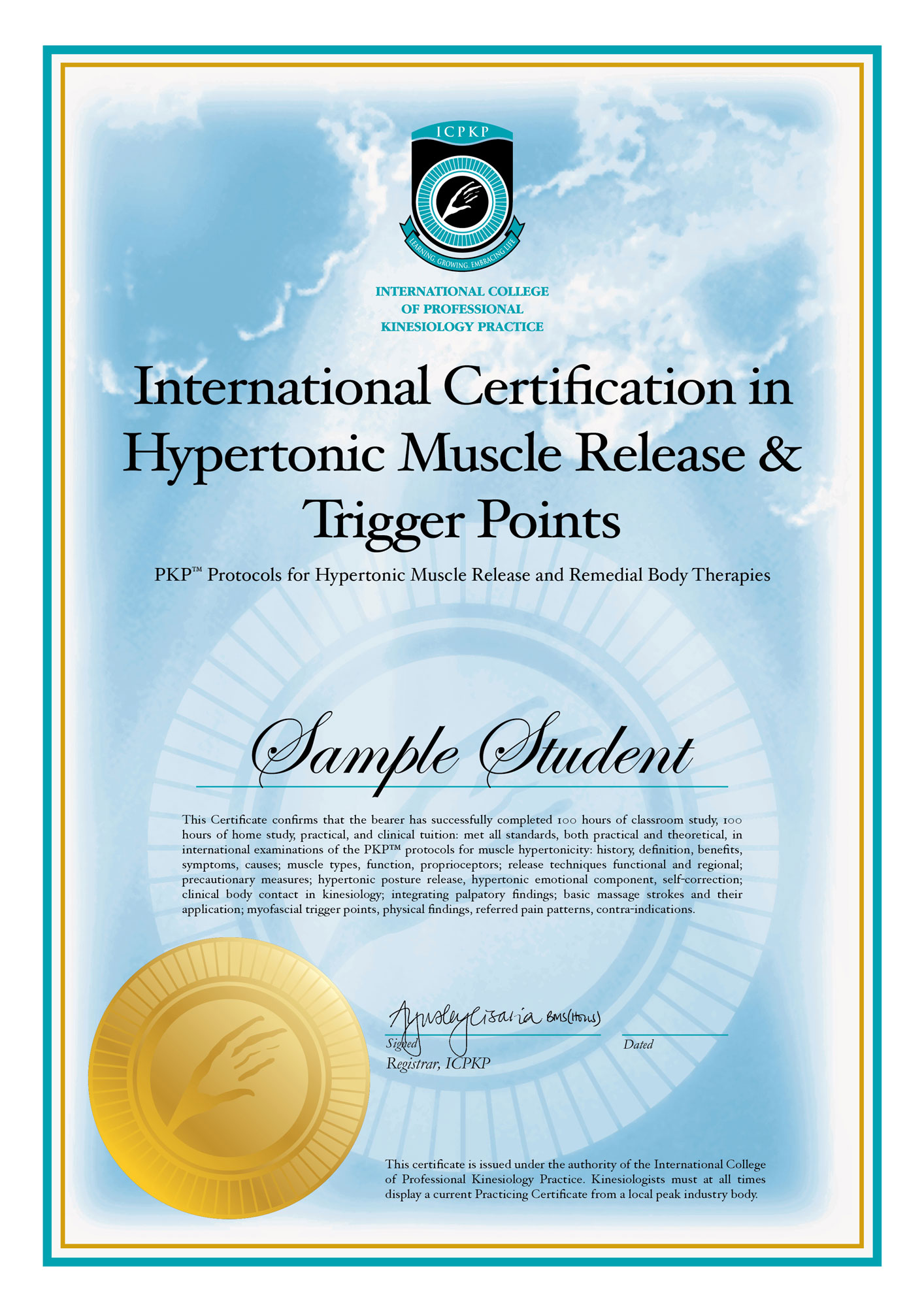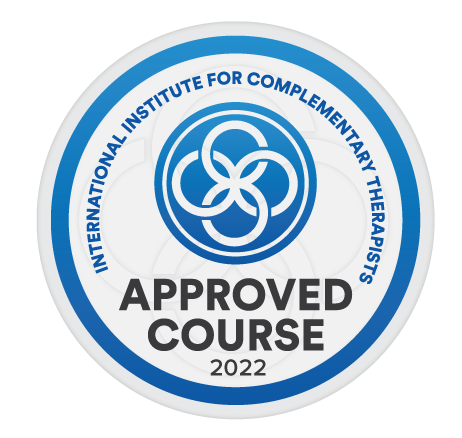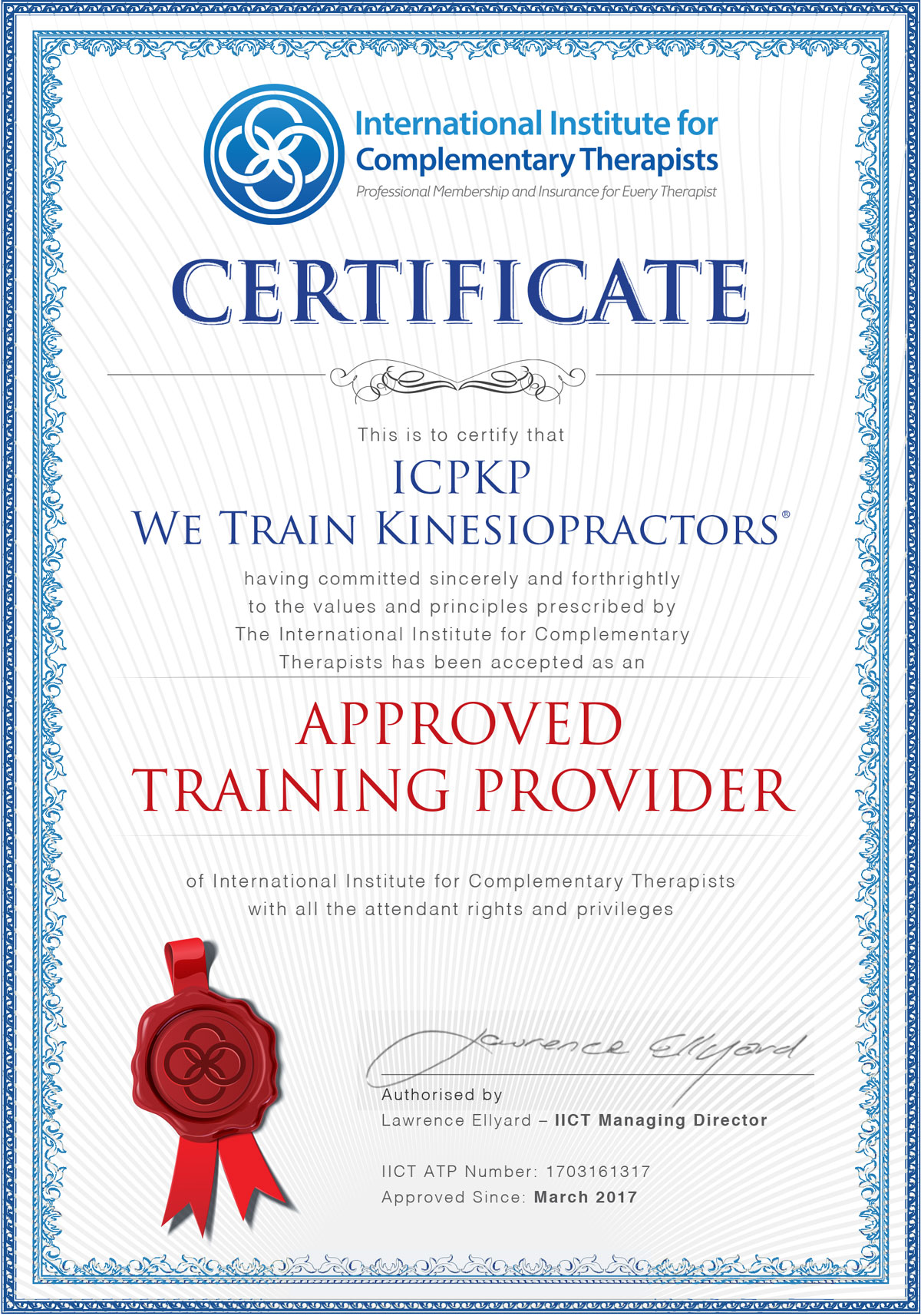
ICPKP® Hypertonic Muscle & Trigger Point Certification Program
Prerequisite: ICPKP® Musculoskeletal Protocol Certification Program
An old client rang to tell me her arborist told her what a wonderful ‘trick’ I had taught him several years ago for his pain caused by hanging in trees. He said, “you saved my business”. This is what Hypertonic Muscle Release (HMR) is all about.
Muscle trauma can cause spasticity, which makes walking, talking, and even sitting difficult. Emotional trauma can do the same. HMR is not just a catchy name for Proprioceptive Neuromuscular Facilitation (PNF). Once you get the HMR concept you will be using the finger mode as a Pre-test for children with Learning Disorders. This is exciting stuff!
Frank Mahony said that when a muscle, taken to its full range of movement, fails the muscle test (or an indicator muscle unlocks), it is hypertonic – over resistant to stretch. Mahoney first observed the connection between over-tight muscles, learning problems and an emotional component when he worked with reading-impaired students in 1982 even before applying his techniques to a wide range of athletes and sportspeople.
Later, school headmaster, Ken Liens showed that hypertonicity may be occurring long before the greatest elongation of a muscle has been reached. He showed with very gentle passive and progressive extension, that hypertonicity often starts very early in the range of motion revealing a potentially traumatised muscle (and human being) that one is working with. He placed more emphasis on emotions. Joan Dewe developed a whole range of hypertonic emotion questions that are invaluable with traumatised human beings expressing this trauma as physical hypertonicity.
Trigger Points are hyper-irritable spots in skeletal muscle, also known as hypersensitive palpable nodules. They are painful on compression and can give rise to characteristic referred pain (RPP), referred tenderness, motor dysfunction, and autonomic phenomena. Clients love it when you recognise their RPP and when you reproduce their pain with one touch – then show it to them on a chart. You will learn the many, many ways practitoners work with them, and how to choose (if not in a full balance situation). You will love the PKP™ protocol and the little extra helps we check for. You will learn about seven absolute no-no, never-use situations.
This course includes:
| Code | Name | Type |
|---|---|---|
| HMR201-en | Hypertonic Muscle Release Basic | LDP |
| HMR301-en | Hypertonic Release – Arms and Legs | LDP |
| HMR302-en | Hypertonic Release – Head, Neck, Torso | LDP |
| HMRtest-en | HMR End of Series test | LDP |
| RBT301-en | Trigger Points | LDP |
LDP = Lecture, Demonstration, Practice.
HS = Home Study
OC = Off campus (taken with an external provider)



